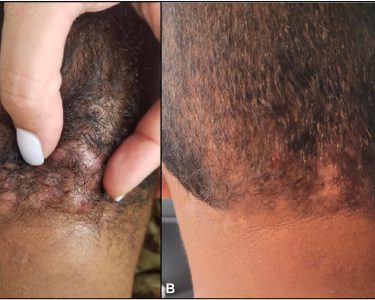Folliculitis is an annoying and uncomfortable skin condition that affects millions of people worldwide. It is caused by bacteria that infect the hair follicles, leading to red, itchy bumps on the skin. While there are several conventional treatments available, including antibiotics and topical creams, many people prefer natural remedies to combat folliculitis. In this blog post, we’ll explore some of the top natural remedies for battling bacterial folliculitis, from tea tree oil to turmeric. Whether you’re looking for a gentler treatment option or simply want to avoid the harsh chemicals found in conventional treatments, this post will provide you with everything you need to know about natural remedies for folliculitis.
Benefits of Tea Tree Oil
Folliculitis is a common skin condition that can cause discomfort and embarrassment. Fortunately, there are natural remedies for folliculitis that can help to reduce inflammation, itchiness and redness caused by bacterial folliculitis. One of the most effective natural remedies for folliculitis is Tea Tree Oil. This powerful essential oil has natural antibacterial properties that make it an effective antiseptic for treating skin infections, including bacterial folliculitis. Its anti-inflammatory properties can help to soothe irritated skin, reduce swelling and redness, and relieve itchiness. To use Tea Tree Oil for folliculitis, simply mix a few drops with a carrier oil like coconut oil or olive oil and apply it to the affected areas. You can also add a few drops of Tea Tree Oil to your bathwater for a relaxing and healing soak. Using Tea Tree Oil as a natural remedy for folliculitis can help you to alleviate symptoms and promote healthy skin.
All in all, Tea Tree Oil stands out as the Best Home Remedy for Folliculitis. With its potent antibacterial properties, it can help eliminate the bacteria that cause folliculitis. It also helps reduce inflammation, soothe the skin and prevent scarring. When applied regularly, Tea Tree Oil helps to prevent the build-up of bacteria in the affected area, further reducing the risk of infection. Additionally, it can help speed up the healing process of bacterial folliculitis. It is important to note that Tea Tree Oil should be used with caution and always diluted before use, to avoid skin irritation. Nonetheless, it remains an effective and affordable option for those looking for natural remedies for bacterial folliculitis.
Turmeric as a Natural Remedy
Bacterial folliculitis can be an annoying and embarrassing skin condition. Fortunately, there are many home remedies that can help alleviate the symptoms and promote healing. One of the most potent remedies is turmeric, a spice commonly found in many kitchens. Turmeric’s anti-inflammatory and antibacterial properties can work wonders to soothe and heal bacterial folliculitis. To use turmeric as a remedy, mix a teaspoon of turmeric powder with some water to make a paste. Apply the paste to the affected area, cover it with a bandage, and leave it on overnight. The turmeric will help reduce inflammation and kill off any bacteria causing the folliculitis. Over time, this treatment can help clear up the skin and prevent future breakouts. So, consider using turmeric as a natural home remedy for bacterial folliculitis, and enjoy the benefits of healthy, clear skin.
When it comes to the best home remedy for folliculitis, there are a variety of options to choose from. However, one remedy that stands out is the use of tea tree oil. Tea tree oil has several properties that make it especially effective in reducing the swelling, redness, and infection associated with bacterial folliculitis. This natural oil has antifungal and antibacterial properties that can help kill the bacteria causing the infection, while also reducing inflammation and promoting healing. To use tea tree oil as a remedy for folliculitis, simply dilute a few drops in a carrier oil, such as coconut or jojoba oil, and apply it directly to the affected area. With consistent use, tea tree oil can be an effective and natural way to treat bacterial folliculitis from the comfort of your own home.
However, it’s important to note that herbal treatment for folliculitis should never replace medical advice or treatment prescribed by a doctor. While natural remedies like turmeric can be effective, severe cases of folliculitis may require more advanced treatment. In addition to using herbal remedies, it’s important to maintain good personal hygiene and avoid activities that can irritate the skin, such as wearing tight clothing or using harsh soaps. By combining these strategies and seeking guidance from a medical professional when necessary, individuals with folliculitis can find relief and ensure their skin stays healthy and clear.
To Conclude
In conclusion, bacterial folliculitis can be a frustrating and uncomfortable condition to deal with, but there are several natural remedies available that can effectively combat it. From the antibacterial properties of tea tree oil to the anti-inflammatory benefits of turmeric, these natural remedies can help soothe the skin, reduce redness and itching, and speed up the healing process. Whether you choose to use these remedies alone or in combination with conventional treatments, incorporating natural remedies into your folliculitis treatment plan can provide a gentler, safer, and more effective way to address this common skin condition. So give them a try and see for yourself the amazing benefits they can offer!




